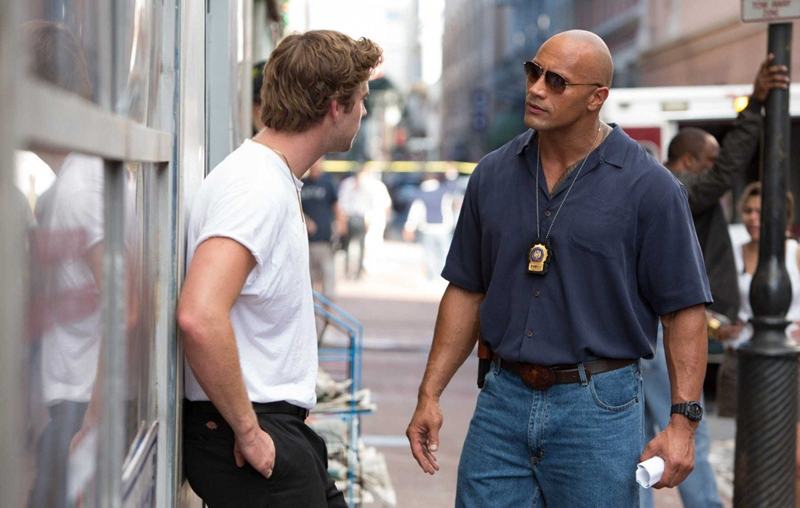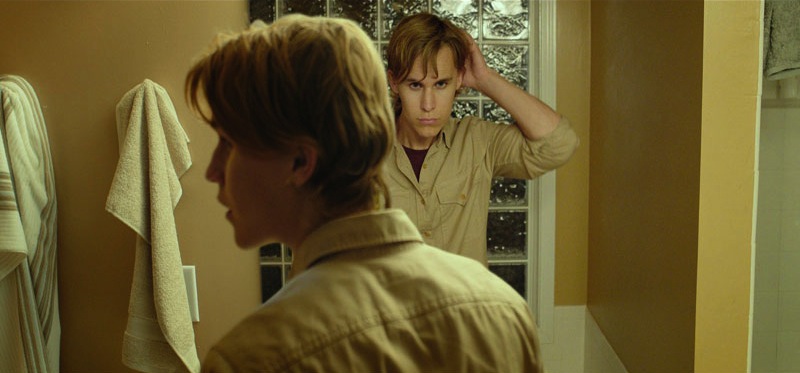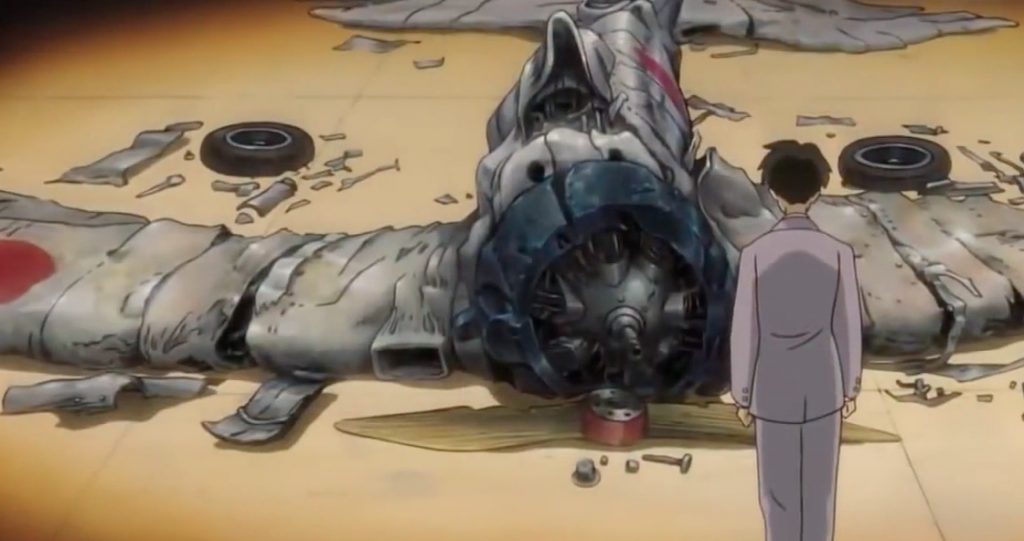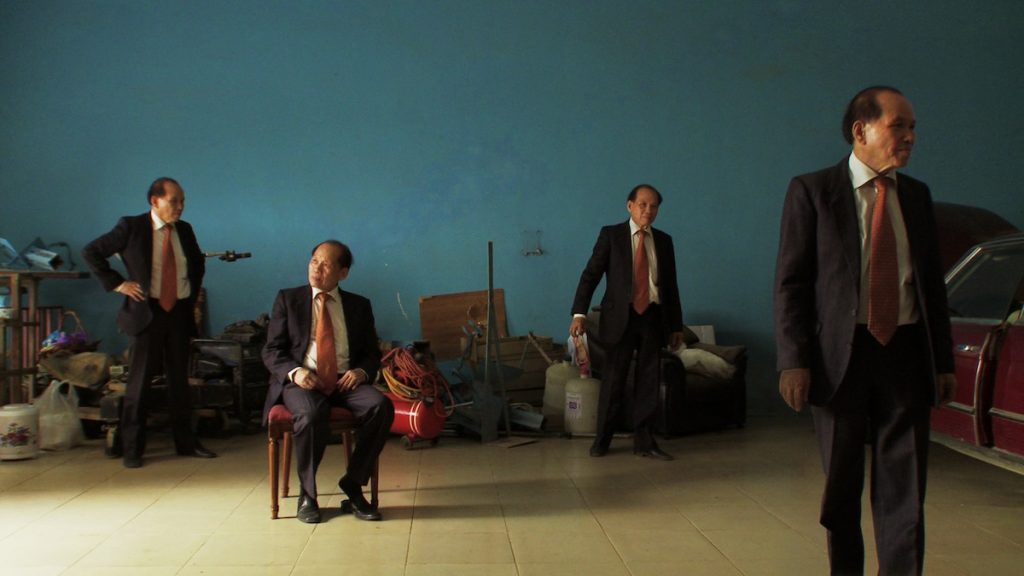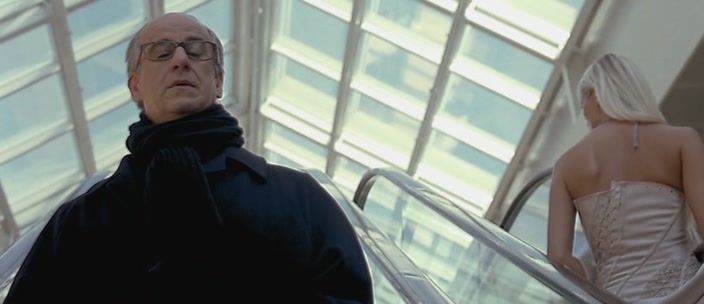For film buffs, December is the month when major studios stuff multiplexes with awards bait. December is also the time for list-making/advocating the year’s best films. For your consideration, here are ten exceptional films that only received a week-long theatrical release in 2013.
10. Empire State (2013)
This New York City-set, based-on-a-true-story heist film was released on VOD at the same time it played at Manhattan’s Village East for one week. Liam Hemsworth (Expendables 2) and Michael Angarano (Gentlemen Broncos) co-star as a pair of dead-end twenty-somethings that hope to make it big by robbing an armored car company. Dwayne Johnson plays the no-nonsense Astoria cop that’s assigned to investigate their robbery. Empire State is just that straight-forward (i.e., formulaic), but it’s also very satisfying thanks to director Dito Montiel (A Guide to Recognizing Your Saints, Fighting), who mythologizes the city’s various clashing ethnic factions like they were warring gangs in The Warriors. Montiel’s style takes inspiration from Scorsese’s early New York movies, but his heroes are screw-ups first, and underdogs second. His Queens is full of people that want to win, but are only so good at what they do. They’re funny, pathetic, and recognizably human. So while Empire State isn’t a complex story, it is well-told, and consistently compelling.
9. It’s Me, It’s Me (2013)
Japanese filmmaker Satoshi Miki (Adrift in Tokyo, The Insects Unlisted in the Encyclopedia) is sadly not as well-known as he should be in America, probably because his movies are upbeat and absurd, and not grim/bloody/psychologically complex and absurd. It’s Me, It’s Me is a bit like Multiplicity, only it’s clever, and not insufferable. TV star Kazuya Kamenashi plays a self-absorbed young man that becomes more empathetic after he bumps into a murder of clones. His doppelgangers are mysteriously self-generating, and never 100 percent like Kamenashi’s character. These slight differences predictably lead to in-fighting, and eventually, Kamenashi’s clones start murdering anyone they think is an “imperfect copy.” Like Adrift in Tokyo, It’s Me, It’s Me is seriously weird. Miki’s magical realistic sense of humor is off-putting because he doesn’t have a complicated or showy visual style. But while the film’s cinematography is fairly basic, Kenji Ueno’s baroque synth soundtrack sets the film’s off-kilter tone. At 119 minutes, It’s Me, It’s Me is way too long, but it’s so captivatingly inventive that that’s rarely a major issue.
8. Outside Satan (2011)
French provocateur Bruno Dumont (Hadewijch, Twenty-Nine Palms) had two films released in America this year. Outside Satan certainly brings more head-scratching than Camille Claudel 1915, but it’s no less worthwhile. The Robert Bresson-inspired Dumont simultaneously mocks and wonders about spirituality throughout Outside Satan. Here, spirituality is characterized by fervent superstition: David Dewaele plays a stranger that performs bizarre, violent exorcisms on desperate Opal Coast villagers. Life in Outside Satan is accordingly as bleak and mysterious as it is in Dumont’s earlier Humanity and The Life of Jesus. Dumont shows us this world through romantic long takes of characters navigating foreboding countryside landscapes. But Outside Satan is most convincing/upsetting when it’s most unclear whether Dumont is screwing with you, or generally unsure of whether superstition is the key to seeing, or maybe just experiencing (never understanding) faith.
7. David (2013)
This trifurcated Indian drama is reminiscent of Cloud Atlas in that both films follow separate, but parallel stories about antiheroes that either make a major life choices, or lose the courage of their convictions forever. But David is more focussed, and believably optimistic than Cloud Atlas. David follows only three stories, all about men named David: in 1970s London, a man tries to protect his pregnant wife from his gangster boss; in 1990s Mumbai, a musician chooses between his career as a musician, and protecting his persecuted Christian family; and in present-day Goa, a drunk islander falls in love with his best friend’s fiance. Also, while Cloud Atlas has its moments, David is consistently better at being more romantic than reflexively cynical. For more information on David, check out my Village Voice review.
6. +1 (2013)
This teen scifi/horror drama only got a five-day theatrical release before being dumped on VOD. But if you ever wanted something interesting to happen in a Todd Phillips comedy, or wondered what a John-Hughes-meets-Timecrimes film looks like, then +1 is the film for you. After a meteor crashlands to Earth, a trio of twenty-something misanthropes notice strange goings-on at a sex-and-alcohol-fueled house-party. Without giving too much away, I’ll say the meteor messes with the way party attendants experience time. In other words: the meteor makes it that much harder for the film’s moronic, but sympathetic horndogs to score. Story-writer/director Dennis Iliadis (the surprisingly effective 2009 Last House on the Left remake) doesn’t pretend that his characters are completely likable. But cares enough about them to show their boorish behavior while also insisting that his characters are all one second chance away from becoming better people. That doesn’t mean these kids will make the most of the opportunities afforded them. But they can if they want to, and that makes +1′s contrived finale effective, though not completely satisfying.
5. Crazy and Thief (2012)
Writer/director Cory McAbee is a consummate tinkerer. After The American Astronaut, a feature-length scifi-western-musical, McAbee helmed, wrote, composed, produced, and starred in Stingray Sam, an hour-long serialized drama that also features singing cowboys in space. Crazy and Thief, his latest film, is a children’s adventure set in contemporary Brooklyn, and modeled after early 1970s episodes of “Sesame Street.” It’s a fifty-minute long road trip starring children—McAbee’s children, Willa Vy and John Huck—that are way too young to drive. After devising a star map, Crazy (Willa Vy) and Thief (John Huck) go in search of the star of Bethlehem. But because Thief is only understandable thanks to English subtitles, and Crazy makes up the rules of their journey as they go, Crazy and Thief is more picaresque journey than most road movies. The film’s open-ended conclusion suggests a trip doesn’t have to have a definite beginning, or an end, just a long, inviting middle. And as usual, the film’s New Wave/post- punk score (think the Stranglers by way of Pixies songs like “Weird at My School” or “Build High”), by McAbee’s group The Billy Nayer Show, is fantastic.
4. Vanishing Waves (2012)
A game: try describing Vanishing Waves without making friends or especially patient family members laugh at you. Go on, try describing a film that’s (OK, here goes) an erotic Lithuanian science-fiction thriller about sexual/romantic obsession. Vanishing Waves is reminiscent of everything from Altered States to Society. Director Kristina Buozyte’s direction evokes both David Cronenberg’s eighties body-horror films, and radical Polish filmmaker Jerzy Skolimowski’s sixties output. And while it is impossible to neatly describe Vanishing Waves, the film is a totally focussed, and enthralling look at one man’s virtual affair with a comatose stranger, a woman he meets through an elaborate mind-linking virtual-reality device. Vanishing Waves is visually stunning, and its scenes of sex/violence are just as sexy as they are repulsive. So stop trying to describe this film, and just stuff it in your friends’ stockings already (you can it buy it here).
3. The Wind Rises (2013)
Japanese animator Hayao Miyazaki’s (supposedly) final feature film only played for a week in 2013, but will be back next year. But because 2014 is a lil far away, and The Wind Rises is that great, it’s worth praising now. Wind is a romantic fantasy based on a biographical manga about Jiro Horikoshi (voiced by Neon Genesis Evangelion creator Hideaki Anno), a WWII aeronuatical designer. Jiro is a typical Miyazaki character in that he’s a dreamer living in a vast, and mostly indifferent environment. But his aircraft designs, and his romance with Naoko Satomi (ex-pop musician Miori Takimoto, lead voice actress in Perfect Blue) makes Jiro more in sync with his environment. For more praise on The Wind Rises, check out my Village Voice review.
2. Golden Slumbers (2011)
This devastating documentary is a panoramic survey of the popular Cambodian cinema of the sixties and early-to-mid seventies. Tyro filmmaker Davy Chou interviews a handful of surviving filmmakers—actors, producers, directors—and talks to them about the many now-lost musicals, horror films, and romances they worked on before the Khmer Rouge destroyed the majority of domestic movies. Chou has a critical eye for visual composition, and that makes footage of long-gone movie theaters even more moving. He also brings out the best in his interview subjects, who excitedly talk about their past lives as artists. According to Chou, these long-lost films are not really missing: young Cambodian film lovers listen to their soundtracks, while some remake key scenes from their creators’ memories. Sad, but hopeful, Golden Slumbers will make you want to see and learn as much about Cambodian movies as you can.
1. The Consequences of Love (2004)
After The Great Beauty, The Consequences of Love is the second great film by Italian filmmaker Paolo Sorrentino to receive a U.S. theatrical release. Beauty is the better film, but Consequences, Sorrentino’s decade-old sophomore feature, is even more impressive, and involving. The film’s enveloping atmosphere goes a long way since Consequences is a romantic mystery. It’s also a character study about a money launderer for the mob (frequent Sorrentino collaborator Toni Servillo) that lives alone in a Swiss hotel. Sorrentino tells you much of what you need to know about Servillo’s character, and his self-imposed exile through dialogue-free tracking shots. The film is, in that sense, even more immersive than The Great Beauty. The Consequences of Love may have slipped under most filmgoers’ radar, but it’s also one of the most elusive, and immediately arresting films of the last decade.

For the complete list of year-end lists on Keyframe, go to The Year in Film: 2013.
For the complete index of the films on these lists, go to 2013 Year in Review: Indexed.


